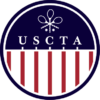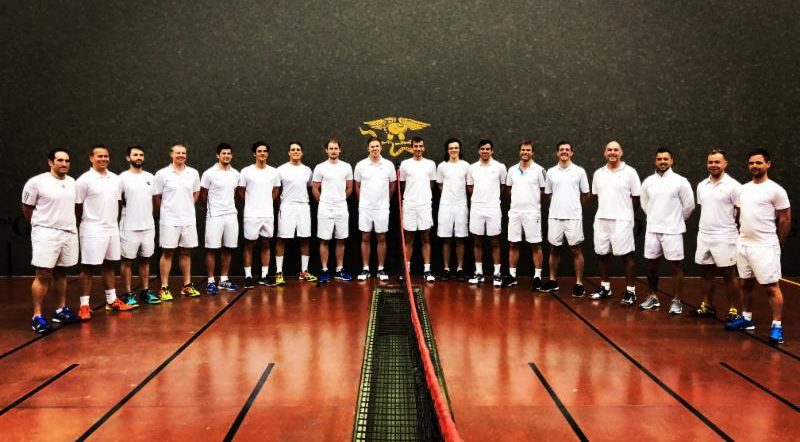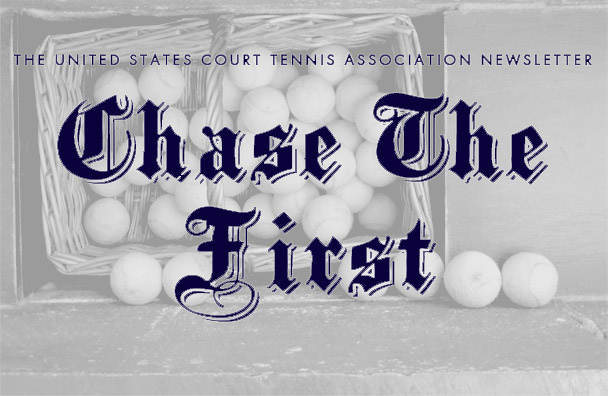Your tour begins with a view of the court from the net (just below the camera view) looking toward the hazard end. All serving takes place from the service end (at your back) to the hazard end. You will see the sloping roof (the penthouse) that extends around three sides of the court. The small window at the end of the court (right) is called the grille; a ball struck into the grille is a winner. On the extreme right is the tambour, a portion of the main wall (the only wall without a penthouse) that juts out at an angle, in essence, slightly narrowing the back portion of the hazard end of the court. Balls that hit this slanted surface come off at an angle.
Rotate the image clockwise (right) and the tambour comes into full view. Here you begin to see some of the floor markings that help “mark” chases. A chase is created when a ball bounces twice in a lined area on the floor without being struck by the player. The point of the second bounce is “marked,” and the point itself is held in abeyance until later in the game.
Rotate a little further and you see the National Tennis Club’s symbol, an eagle clutching a court tennis racquet in its talons. One of the unique aspects of each court are their markings. Newport’s features the eagle, and also pineapples, a traditional symbol of hospitality in the City by the Sea. Courts also differ in the color of the walls and floor and in the materials used. The new court in Washington DC has a main wall that is floor to ceiling glass from the service end to the tambour on the hazard end, giving spectators a sense of being right on court! This is a good view to see the slope of a court tennis net, not strung taut like a regular tennis net but with a little sag in it. Also notice how much lighter the wall color is above the net. This is from a century of tennis balls being boasted off this wall over to the opponent’s side.
Rotate to see the opposite end of the court, called the service end. There is a large netted opening in the back wall on this end, called the dedans. A ball struck into this opening is an outright winner.
Continue on to the battery wall,. See underneath the penthouse several netted openings. These are, in order from the back of the court toward the net: the last gallery (marked on the floor by a gold pineapple on a green post), the second gallery (2ndG), the door (D), and finally, the first gallery (1stG). Unlike the other openings, hitting a ball into one of these doesn’t necessarily win a point, but can create a chase, so they have strategic value.
Rotate further until you see the entrance to the court, which is also called the marker’s box. A professional will score or “mark” a match, keeping track of points and chases, traditionally by standing in this box. (Another good view of how much the net “sags.”)
You’re almost done. Rotate back to the hazard end of the court. You’ll see similar netted openings, marked with similar labels, as on the service end, but in the opposite order, first gallery, the door, second gallery. The last netted opening is not called the last gallery, as it is on the service end, but the winning gallery, and is the last of the three openings that will win a point outright when a ball is struck into it.
The red border all around the top of the court marks the out of bounds area. Any ball that hits the red or above is out.
You may have noticed that while the floor is completely marked on the service end of the court, that’s not the case on the hazard end. If a ball lands for a second time within the unmarked portion of the hazard end of the court, the point is over, just as it would be in regular tennis. Therefore, it’s easier to be on the service end and win a point; you can aim for the grille, the tambour, the winning gallery, or just try to get the ball to bounce twice on the floor in the unmarked area before your opponent hits it. Serving is a big advantage in this game!


